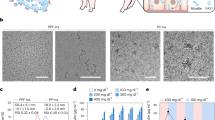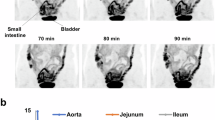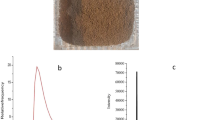Abstract
Summary: The intestinal osmolal physiology and absorption of comparable preparations of polymerized glucose and glucose were evaluated in isolated segments of rat duodenum. The acute rise in the osmolality of the succus entericus after 5% polymer injections (298 mOsm/kg at 3 min, 311 mOsm/kg at 30 min) was significantly less than that noted after 5% glucose (387 mOsm/kg at 3 min, 351 mOsm/kg at 30 min). At 60 min a steady state had been established and no significant difference was found. Ten percent polymer was superior to 10% glucose as it also produced a lower luminal osmolality (351 mOsm/kg versus 427 mOsm/kg at 30 min). Luminal polyethylene glycol concentrations revealed comparable increases in intraluminal water content after 10% polymer and 5% glucose (22% versus 25% at 30 min). After polymer injections, 4 times as much glucose was present in the mucosa as in the succus, whereas, after 5% glucose injections, a high concentration of glucose remained in the succus.
These results indicate that polymer solutions produce lower luminal osmolality than glucose solutions of similar weight. Additionally, enhanced glucose absorption by the mucosal cell is suggested in animals injected with polymer. Polymerized glucose should, therefore, provide twice the calories of glucose without a disparate increase in the intestinal osmolality and intraluminal diffusion of extracellular water.
Speculation: A polymerized glucose preparation, when administered orally, produces a lower immediate intraluminal solute content and osmolality than a glucose solution of the same concentration by weight when each has comparable electrolytes. Hydrolysis of the polymer within the intestinal lumen and on contact with the brush border of the intestine provides nutrient without increase in water movement into the proximal small bowel. Because of these properties, such a polymer may be useful in the oral nutritional rehabilitation of neonates and infants with diarrhea. It remains to be seen whether the pathogenesis of the diarrheal state may also prove to be of significance in determining the beneficial effect of this therapy.
Similar content being viewed by others
Log in or create a free account to read this content
Gain free access to this article, as well as selected content from this journal and more on nature.com
or
Author information
Authors and Affiliations
Additional information
Fredric Daum, MD., Department of Pediatrics, North Shore University Hospital, 300 Community Drive, Manhasset, New York 11030 (USA).
Rights and permissions
About this article
Cite this article
Cohen, M., Mcnamara, H. & Finberg, L. Intestinal Osmolality and Carbohydrate Absorption in Rats Treated with Polymerized Glucose. Pediatr Res 12, 24–26 (1978). https://doi.org/10.1203/00006450-197801000-00006
Issue date:
DOI: https://doi.org/10.1203/00006450-197801000-00006
Keywords
This article is cited by
-
Hypoproteinemia-induced mucosal albumin leakage
Digestive Diseases and Sciences (1989)
-
Absorption of carbohydrate-electrolyte solutions in rat duodenojejunum
Digestive Diseases and Sciences (1985)
-
Effects of liquid formula diets on proximal gastrointestinal function
Digestive Diseases and Sciences (1981)



